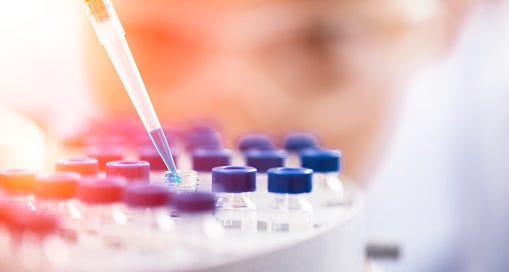Potential Impacts of Anti-Aging and Life Extension – Part 2
An exploratory reflection...on lifestyles, relationships, family planning, and society.
This is essay 2 of 6 essays for 1729 Writers Cohort #1. Apply to 1729 today at https://www.1729.com
This post is the second of hopefully a series of essays that tries to reflect on issues related to aspects of transhumanism, which can arguably be defined as the enhancement of the human condition through technology to achieve more longevity, cognitive abilities, emotional states, and other previously seemingly impossible feats. Again, I am not an expert in this emerging field, so these series of essays hopefully serve as notes and logs on reflection points as I try to learn more about relevant issues.
The previous post, titled Potential Impacts of Anti-Aging and Life Extension – Part 1, explored possible consequences of anti-aging and life extension on education and work. In Part 2 here, I will try to explore reflections on possible scenarios in which anti-aging and life extension can potentially alter lifestyles, relationships, family planning, and society.
The assumption here is that with enough advances in anti-aging and life extension technologies, humans would be able to stretch their upper natural age limits to around 150 years and average life expectancies to above 90-100 years — so we are not assuming that humans would become immortal, at least not yet.
Before we jump in, let's first review some of the potential treatments for anti-aging and life extension currently under research (links are provided in sub-headers for those interested in digging further):
1 - Dietary Restrictions. All else being equal, the less unhealthy foods you intake, the more likely you would extend your longevity. Scientists could also develop new drugs that mimic dietary restrictions to help slow aging and extend life.
2 - Cellular Repair. In theory, if there are enough mechanisms to replace and repair previously seemingly unrepairable tissues, cells, and cellular functions at a rate as fast as they break apart, then perhaps there would be path to anti-aging. One possible method is to use induced pluripotent stem cells to regenerate cells lost due to aging.
3 - Cellular Reprogramming. In theory, if there were effective ways to redial the clock for cells, then one would in essence dial back one's age. It would be a fountain of youth.
4 - Genetic Engineering and Telomere Extension. Telomeres are regions on one's DNA chromosomes. The shorter one's telomeres, the more likely for one to be susceptible to aging diseases. Enzymes called telomerases could in theory be used to extend telomeres and as a result extend life.
5 - Senolytics. Scientists are researching drugs that could kill senescent cells, or cells that have divided so many times that they stop dividing as well as contribute to aging and disease. If new drugs could eliminate or reduce the number of senescent cells, then we could preemptively prevent aging and disease.
Lifesyles
"Life is too short, so we must seize the day!”
“Have no regrets!"
Growing up, we often hear the above refrains. Our lives are relatively short, and therefore we should take risks, seize the day, and live to have no regrets. By this logic, the likely expected payoff of adventure in a limited lifespan is greater than that of seemingly boring risk aversion. Go sky diving, or journey into the safari, or elope with that man/woman to Vegas. Don't wait, because there is no fountain of youth. You can only be young once!
But, with much longer natural lifespans, the payoff equation changes. The risks of brash adventure-seeking may lead to prematurely cutting down on an otherwise long and fulfilling life. You can potentially be young for a very long time. So maybe it's a wise idea to forgo that sky diving trip (think of the potential for accident!), avoid the safari (the lions!), and not elope with that man/woman you just met (many years are available for careful selection!).
"Life is long, so we must conserve for the future."
“You will regret short-term gratifications!”
Future citizens of the world may grow up hearing different refrains. Their world may be full of guardrails against existential accidents that curtail a prolonged life. Insurance products may skyrocket, AI and software for body protection would proliferate, and helmets may be everywhere on the street. Hey, maybe mask mandates won't be necessary, because everyone would proactively wear one!
While many would become more cautious toward seemingly existential risks, on the other hand, given longer natural lifespans and more time in their primes, people would likely be more willing to experiment on more non-existential pursuits and past-times. “I don't have time for X” would give way to “let's explore X and Y and Z.” As discussed in the previous post, experimentations such as gap years may become gap decades, and with more cushions to fail, more people would be willing to take plunges into entrepreneurship or passion projects. And that trip to Bahamas or the Galapagos could be taken, because there is a lot more time to pay back the bills.
Relationships and Family Planning
Relationships and family planning are areas that may potentially see major paradigm changes over the coming decades as people live longer and age more slowly. With more prime years in the bank, and more time to pursue one's own passions or to explore different relationships, more people may decide to delay marriage or permanent partnership until a much later time in life. In countries where arranged marriages are common, parents may decide to take more time to carefully select and vet potential mates for their sons and daughters. Men and women may become even pickier at selecting life and relationship partners, for they may no longer feel as much anxiety over time passing. In the future, a TV series similar to “How I Met Your Mother” may take multiple decades to complete.
With more prime years, more couples may decide to hold off on having children until a later stage in life. While many anti-aging technologies being researched currently may not extend a woman's natural fertility span, more and more women would likely choose to freeze their eggs and put off pregnancy until a later period. Some men may also choose to store their sperm for a later date. Egg freezing and sperm storage will no longer be primarily used by patients with disease and become much more commonplace practices.
As a result of both delayed marriage and delayed childbearing, it is likely that in the future, the age gap between generations widen significantly. Nowadays, the average difference between each generation is around 25 years; in the future, the difference may be double or triple the number of years. It would be more commonplace to have parents at over 60 years old caring for children in their early childhood.
Society
Life extension and anti-aging technologies may extend their impacts on a whole-of-society level. Arguably, life extension and anti-aging do not directly impact a population's replacement rate, which may be more impacted by economics, social norms, and culture. What they do is delay the impact of rising or lowering fertility rates. Countries and regions with straight population pyramids and a surplus of youth or working age adults — such as India and many Southeast Asian or African countries — may be able to extend the benefits of their population surpluses much longer. This, of course, would be due to working age adults being able to extend their productive primes. Countries and regions with more inverted or in-balanced population pyramids, such as China, Japan, and some countries in Europe, may be able to delay the advent of their working population declines some more — also due to extension of working age adults’ primes.
As with most transformative technologies, short of direct government intervention or subsidies, the rich or privileged in society may be the only class who could afford life extension and anti-aging in the beginning. Such instances would serve to further expand social gaps. That said, given enough time, and given the importance of such technologies, the treatments would proliferate across entire populations and societies, so that what was once reserved to the top 1% becomes ubiquitous.
Life extension and anti-aging technologies will likely to put more stress on societal resources, their access and availability, and their distribution. With significantly more people at any given time, societies will face increasing pressures on public transportation infrastructure, energy usage, water and food provisioning, healthcare facilitation, and living spaces. Politics and public policies around resource distribution and equity would be at the forefront of nearly every newspaper and media outlet.
With natural lifetimes extended, people — and by extension politicians who receive their votes — would likely direct immediate social and political focus toward issues that may be previously deemed problems for future generations to solve. Climate change would no longer be a “problem of the future generations” to some deniers; instead, it would be a real pressing matter with direct impact on the lives of every household and individual. Social security and healthcare reform would also be pressing issues rather than problems far away. Politicians around the world would also likely face pressures to significantly reduce public debt — after all, the debt is no longer stuff that only future generations need to worry about!
Conclusion
Anti-aging and life extension advancements would probably trigger big changes in lifestyles, family planning, education, and work, as well as drive impacts on society, politics, and public discourse priorities. We may stand on the cusp of new and exciting times. The above reflections are not exhaustive, so I welcome feedback as well as additions on other potential impacts.
This post is purely for reflection and information purposes, and it does not constitute any advocacy for any political, scientific, legal, or ethical position. For earlier posts and musings, please visit whatifwhatif.substack.com.







